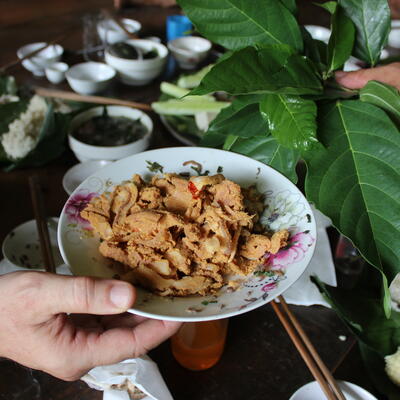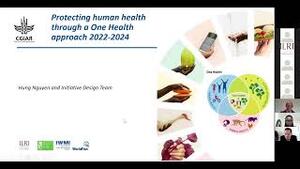
New scoping review sheds light on antimicrobial resistance in global food crop value chains
The role of food crops as a conduit for transmission of antimicrobial resistance from soil and water to humans has not been widely studied. Contamination of food crops with antimicrobial-resistant pathogens presents an added foodborne risk to human health.
A team of researchers from the London School of Hygiene and Tropical Medicine, the International Livestock Research Institute, the University of Copenhagen, Royal Veterinary College and CABI carried out a systematic literature review to consolidate the current state of knowledge on antimicrobial resistance in food crop value chains globally. The review is published in Frontiers in Sustainable Food Systems (3 Feb 2022).
The review summarized and compared baseline descriptive data on antimicrobial resistance detected in crops and crop inputs globally. This enabled the identification of gaps in understanding of the potential food safety risks to consumers.
A search of four bibliographic databases using synonyms of antimicrobial resistance in food crop value chains identified 196 studies of interest from 49 countries, mostly in Asia (89 studies) and Africa (38 studies).
The four most frequently recorded species of interest were Escherichia coli, Salmonella enterica, and Enterococcus faecium or Enterococcus faecalis. Salad crops, vegetables, and culinary herbs were the most sampled crops.
The review found that acquired antimicrobial resistance in human pathogens is disseminated throughout food crop value chains in multiple regions around the world.
However, there were variable patterns of distribution of antimicrobial resistance. Chloramphenicol resistance was reported in food value chain samples in low- and middle-income countries in Asia and Africa while vancomycin resistance in enterococci was reported in food crops from high-income countries.
“This review confirms the widespread reporting of resistance to antimicrobials of medical importance in human pathogenic microbes isolated from crops, both in the field and marketplace,” the authors state.
However, it is difficult to conclusively quantify the risks of exposure to consumers because of the low number of longitudinal studies and diverse sampling methods used.
“Firm conclusions cannot be drawn on the prevalence and relative importance of different kinds of resistance and antimicrobial resistance transmission pathways because of the substantial heterogeneity between study methods and conditions,” the authors caution.
“There is a need to include agriculturally-derived antimicrobial resistance in monitoring food safety risks from plant-based foods, and the challenges facing its surveillance,” the authors recommend.
Citation
Brunn, A., Kadri-Alabi, Z., Moodley, A., Guardabassi, L., Taylor, P., Mateus, A. and Waage, J. 2022. Characteristics and global occurrence of human pathogens harboring antimicrobial resistance in food crops: A scoping review. Frontiers in Sustainable Food Systems 6: 824714.
Funding
This scoping review was partially supported by the CGIAR Research Program on Agriculture for Nutrition and Health (A4NH), led by the International Food Policy Research Institute.
Photo credit: Market near Khulungira Village, in central Malawi (ILRI/Stevie Mann)






















